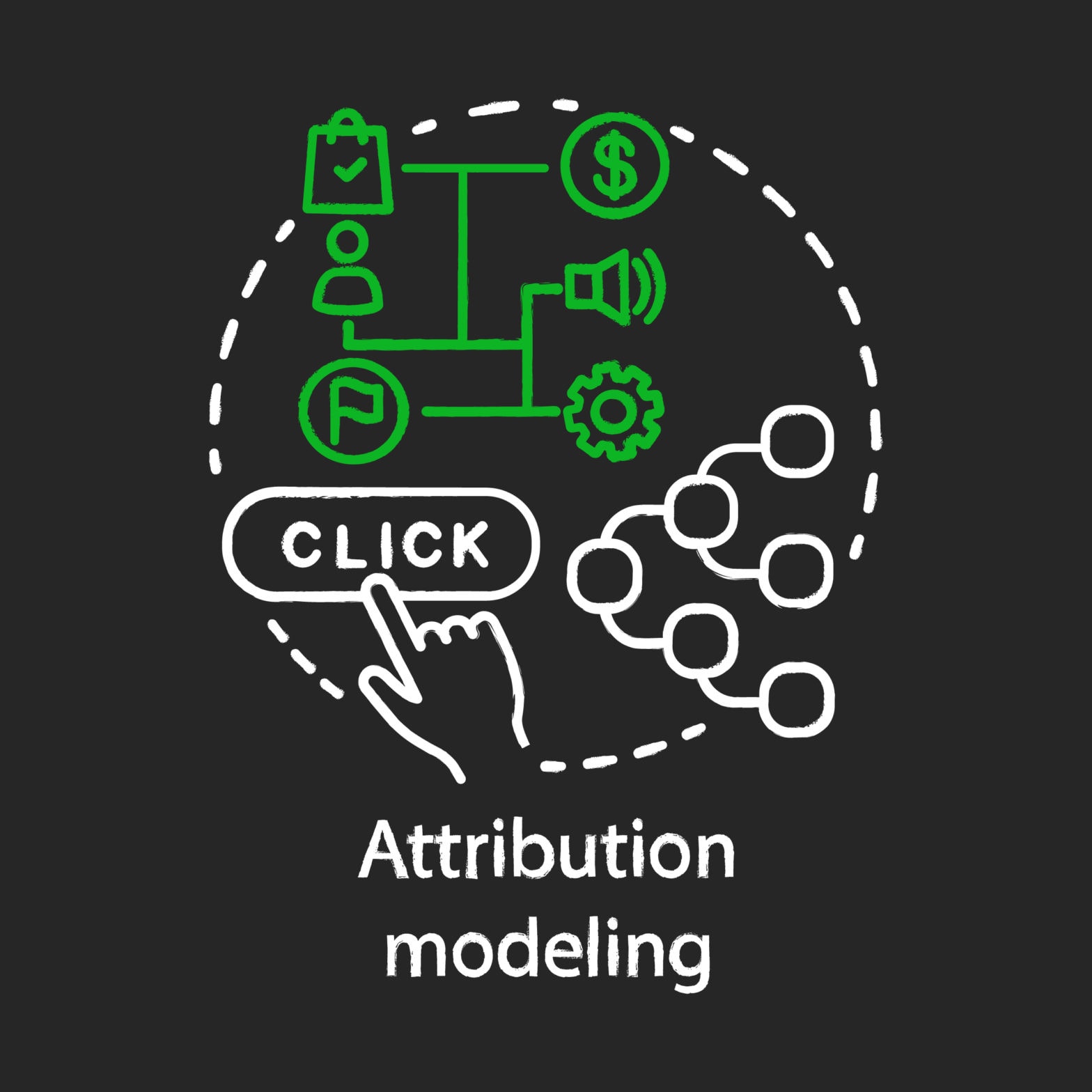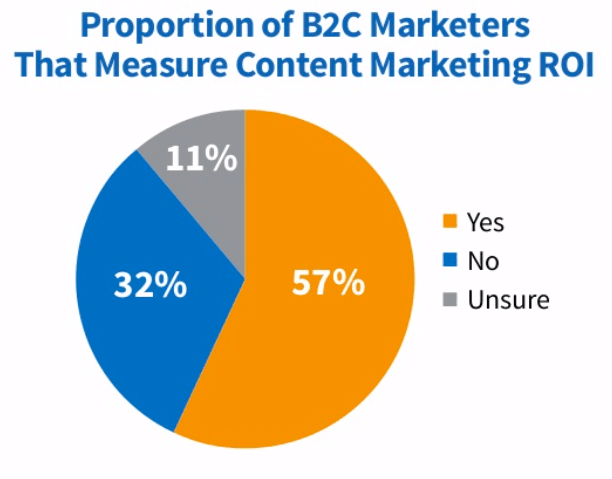
Top 100 Content Marketing Question: How do we measure the fractional impact of content marketing?
Marketing attribution is the key to measurement, and it’s the #1 challenge consumer marketers face. My study of more than 1,600 questions from marketers confirmed this is a major pain point for marketers.
Thanks to Beth Traglia, Director, Digital Content Marketing and Social Media at Farmers Insurance – Enterprise Marketing, for asking this question!
I’ll speak about how I used AI to unlock the secrets inside marketers’ questions at Content Marketing World on September 5. Use the code STENITZER19 to save $100 on your conference registration.

What is marketing attribution?
“Put simply, marketing attribution is the analytical science of determining which marketing tactics are contributing to sales or conversions,” says Marketing Evolution.
Attribution is “just proving what happened,” says marketing artificial intelligence (AI) guru Christopher S. Penn.
Proper attribution enables companies to invest in the right activities today to drive sales tomorrow. Good attribution enables companies to place more and more winning bets that increase their return on marketing investment (ROMI).
How well do marketers connect content marketing with ROI?
Almost 3 out of 5 of consumer (B2C) marketers measure return on investment (ROI) today, found the 2019 Content Marketing Institute survey.
Consumer marketers are a bit ahead of business marketers. About half of business (B2B) marketers say their organizations measure content marketing ROI.

The more successful a business (B2B) marketer is, the likelier that they measure ROI. Of the most successful B2B marketers, about 3 out of 4 measure content marketing ROI.

Attribution parses out the exact contribution from content marketing
It’s a thorny problem: How to sort out the contribution of content marketing from all other marketing activities to prove results from content? To attribute results accurately challenges even the best marketers.
In fact, the attribution problem extends well beyond content marketing to all forms of marketing.
Businesses need to know what happened with their marketing investments, what results were achieved, and how much each marketing activity contributed to revenue or profits.
As John Wanamaker famously observed nearly a century ago, “Half the money I spend on advertising is wasted; the trouble is I don’t know which half.”

The type of attribution you need depends on what exactly you’re trying to prove.
3 places to prove that content marketing works on its own
If your boss is breathing down your neck that you need to prove content marketing works on its own, take a purist approach. Here’s how.
Create a space where content marketing can have enough space and time to work on its own. Draw boundaries around a definable market, so no other marketing activities take place in that space – only content marketing.
Three promising places to start and prove in content marketing are short-cycle sales, orphans, and greenfields.
1. Short-cycle sale
A short-cycle sale is the type of sale where customers make decisions faster, so revenue comes in quicker. That’s why it’s a great place to start – results become evident faster.
For example, in the network equipment market, telecom network buyers take 12 to 30 months to reach buying decisions. On the other hand, electric utilities reach decisions in 3 to 6 months.
That’s why Tellabs launched its content marketing pilot project with electric utilities instead of telecoms. Shorter buying cycles enabled us to demonstrate the effectiveness of content marketing much sooner.
2. Orphan market
An orphan is a product or a market that has gotten zero marketing support in the past year. It still has growth potential, but it’s suffered from neglect.
Most big companies have multiple orphan products or line of business that make perfect laboratories for content marketing experiments.
Adopt an orphan by providing content marketing support. When the orphan’s sales rise unexpectedly, others start to clamor for content marketing to support their products.
3. Greenfield market

A greenfield is a brand-new opportunity such as a new market or a new product. To start here, you must be willing to take this specific risk: To launch a new product solely with content marketing.
By taking that risk, you can attribute 100% of the marketing results to content marketing. That eliminates questions about how much of the success should be attributed to content.
Once content marketing is proven to work on one product launch, it’s easier to lead with content marketing on other new products.
If you can’t identify a short-cycle sale, brownfield or greenfield market that fits business needs to prove in content marketing, you need an attribution approach that addresses multichannel marketing.
Accurate marketing attribution is hard to do right
There’s a built-in catch with attribution: the more accurate and exact you need to be, the more difficult attribution will become.
To attribute properly, Christopher S. Penn recommends:
- Clearly defined business goals
- Crystal-clear KPIs (key performance indicators)
- A system to collect and measure data such as Google Analytics, an equivalent or an AI system
- Data that’s clean, complete, comprehensive, well-chosen, credible and calculable.

Penn categorizes all forms of attribution into 5 types, as you see in the chart below. Let’s start in the lower left corner and work our way up to the top right corner of the chart.

1. Last-touch or one-touch attribution
Last touch is the simplest type of attribution. It considers only one customer touchpoint – whatever a customer did last.
It ignores contributions from all the other marketing work. It’s like giving all the credit to the shooter on a basketball team – with zero credit for teammates who make passes, saves, blocks or assists.
As a result, last touch attribution only fits the simplest, low-dollar sales. You can set up last touch attribution in Google Analytics.
Here’s the bad news: on a carefully considered purchase, last-touch results mislead you more than they inform good decisions. As Penn says, “They’re the easiest and the most wrong.”
2. Assisted conversions
Assisted conversions take multiple customer touchpoints into account. You can set up assisted conversions in Google Analytics under goals, multichannel.
They’re relatively easy, but their accuracy is low.
3. Attribution modeling
Attribution modeling begins with choosing a baseline model – first interaction, last interaction, time decay or position based. Of these, time-decay is the most sophisticated model, Penn says.
This approach provides good results, and it falls in the middle on difficulty.
You can perform these three forms of attribution above with Google Analytics or an equivalent. To learn more about attribution, take the free online training courses from Google Analytics Academy.
Attribution modeling is the outer limit of what you can achieve with Google Analytics or an equivalent system. To go further, you need to apply AI.
4. Machine learning
Machine learning applies AI to detect patterns and extract meaning from complex data. It’s more difficult, and more accurate, than anything you can do in Google Analytics.
You’ll need help from a data analyst who uses R. Penn calls machine learning hard to do. And it provides “very good” accuracy.
5. Deep learning
Deep learning is the most sophisticated, difficult, expensive approach you can take. It also provides the most exacting, accurate picture of what customers do as they go through the buyers’ journey, end to end.
While it’s very hard to do, it offers the best results available today.
How to present marketing attribution
Whatever attribution method your company chooses, it’s key to present results of attribution studies in a way that’s clear, concise, consistent and easy to understand.

Don’t make results that look like the cockpit of an aircraft. Simplify results to look like a car dashboard.
Make sure your presentation helps everyone understand what attribution modeling is telling you. Good attribution, well-presented, leads to good decisions about how to allocate budget and resources.

“How do we track / measure the fractional impact of content marketing?” is one of marketers’ Top 100 Questions on content marketing. Here are the answers.




